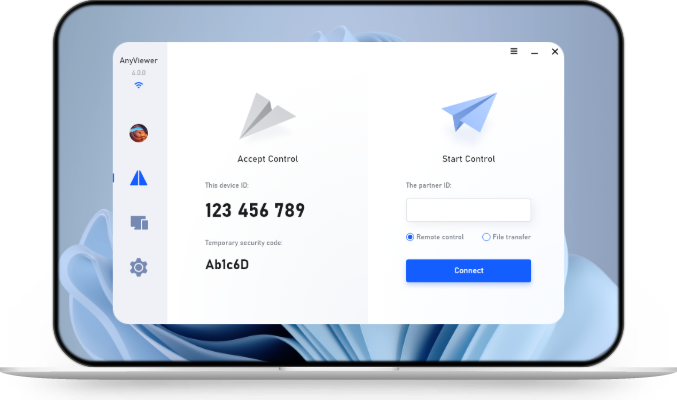4 Popular Ways to Install Software Remotely on another Computer
This post illustrates how to install software remotely on another computer over the network using AnyViewer, Powershell, PsExec, Group Policy. Pick the one that you need.
Can I install software remotely on another computer?
Hi guys, please tell me how to install software on other distant computers for solving technical issues. When I try to execute the command, there is a problem. I was unsure if the distant PCs required an installer or not. Can somebody provide me with a straightforward example of how to install software remotely? Thanks a lot.”
- Question from a user
How to remotely install software with 4 valid ways
Keep reading to realize effective methods, if you are wondering how to remotely install software on another computer.
Way 1. Easily remotely install software with a GUI tool
If you are not tech-savvy, you can try AnyViewer, an easy and safe remote control software, to install programs remotely on another computer. With it, you can take full control of another computer and execute tasks like installing software and running software on the remote PC. Now, free download it and see how it works.
Step 1. Install AnyViewer on both computers and run it. Create an AnyViewer account and log into it on both PCs.
Tips:
- Once logged into the account, the device will be assigned to the AnyViewer account atomically. One-click unattended remote access is only available between assigned devices. Free account can assign up to 3 devices; to assign more devices, upgrade to Professional or Enterprise plan.
- AnyViewer also supports iOS and Android, which means you can connect to a PC from a mobile phone and run Windows apps on Android/iOS devices.
Step 2. On your local computer, go to Device, and you can see all assigned computers. Click the one that you want to install applications remotely and choose One-click control.
Step 3. Immediately, you can have control over the remote computer. Go to a web browser or App Store to download and install the necessary software on the remote computer.
Way 2. Install software remotely using PSExec
PSExec tool is available when you want to install software remotely on your network. It allows you to execute programs and commands on other devices, complete with full interactivity for console applications, without manually installing software.
Step 1. Download the latest PSExec tool from the Microsoft website, then extract the executable into a folder. (e.g. C:\SysinternalsSuite\)
Step 2. Download the MSI package of the software you want to install. For example, if you want to remotely install Google Chrome, you need to download the MSI package from the Chrome download page.
Note: Not all programs support silent mode when running the Setup.exe installer, and therefore you need to download the MSI package instead.
Step 3. Make sure the Windows Firewall on the remote computer enables “File and Printer sharing (SMB-In)” traffic on port TCP 445.
You can check if port TCP 445 is open using the PowerShell command “test-netconnection”.
Step 4. Search “cmd” in the start menu and click Run as administrator.
Step 5. Copy the MSI package file location and type in the following command to send it to the remote computer. (here we take Google Chrome as an example)
- Copy c:\users\username\downloads\GoogleChromeStandaloneEnterprise64.msi\\ENDUSER-PC\C$
Where “ENDUSER-PC” is the name of the remote computer, you can also use the IP address instead.
Step 6. Enter “C:\SysInternals” to change the current directory.
Step 7. Run the following command to start installing the software on the remote computer.
- PsExec.exe \\ENDUSER-PC\ -i -s msiexec.exe /i "c:\GoogleChromeStandaloneEnterprise64.msi" /qn /norestart
Then PSExec will launch the GoogleChromeStandaloneEnterprise64.msi installer on the remote computer, which will install Google Chrome in quiet mode (/qn) without user interaction.
Way 3. Install software remotely using Powershell
Powershell, a description language, can be used to build, test and deploy solutions. Follow the steps below to install programs via Powershell.
Step 1. Right-click Start, and choose Windows PowerShell (Admin).
Step 2. On the Powershell window, run the command:
Invoke-Command -ComputerName server01 -ScriptBlock { c:\software\installer.exe /silent}
Note: If the installer doesn't block execution, your script may finish before the installer finishes, resulting in installation cancellation. Thus, it's not recommended to install software remotely using Powershell.
Way 4. Install software remotely via Group Policy
You can use Windows Group Policy to deploy software on multiple computers over network under the following prerequisites:
- Active Directory environment
- MSI installer package of the app
- Shared folder accessible via all the domain users
Step 1. Log on to the Server as an administrator, and create a Shared folder where you'll put the MSI installation package.
Step 2. Allow read permissions to Everyone to allow remote computers to access the MSI file.
Step 3. Copy or put the MSI page in the shared folder.
Note: Please first check and confirm if the domain account of remote computers can access the shared folder. You can press Win+R on a remote computer, then type into the share path to check if you can open and access the path without any login credentials.
Step 4. Go to Start > Administartrative Tools > Active Directory Users and Computers.
Step 5. Click Group Policy tab, click New, type in a name for this new policy, and hit Enter key.
Step 6. Click Properties, click Security, clear Apply Group Policy check box for the security groups that you don’t want this policy to apply to, select t the Apply Group Policy check box for the groups that you want this policy to apply to, and click OK.
Step 7. Go to Active Directory Users and Computers, right-click your domain, and then click Properties.
Step 8. Go to Group Policy tab, select the policy that you want, and then click Edit.
Step 9. Expand Software Settings under Computer Configuration, right-click Software installation, go to New > Package.
Step 10. In the Open window, type the full path of the shared installer package and click Open, click Assigned and click OK.
Step 11. Then, close the window. When the client PCs starts, the software will be automatically installed.
Conclusion
This post introduces how to install software remotely. You can perform this task using different methods based on your own need. The most recommended way is using AnyViewer. It requires no computer experience, which is more convenient for users to remotely install software over the Internet. It is also handy for users who may need routine access to a particular device. Try AnyViewer and you won’t regret it!

